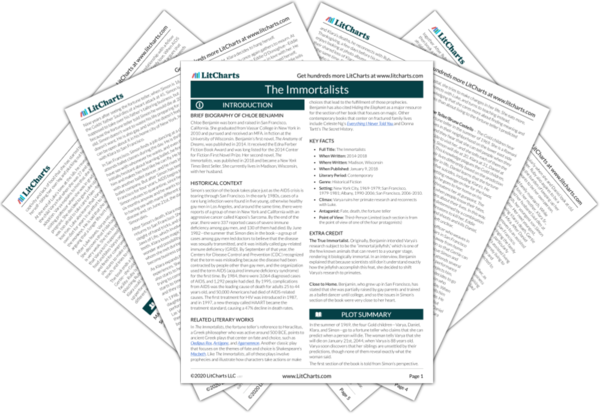Finally, Luke explicitly states that a longer life doesn’t necessarily mean a better one, which is the central idea of Varya’s section of the novel. Varya is sacrificing happiness in order to survive for a long time, just as the monkeys live a longer life in captivity but not necessarily a fuller or happier one. Simon’s life, on the other hand, is a counterpoint to Varya’s, as he prioritized finding meaning and pleasure in his life, even at the cost of living for a long time.
